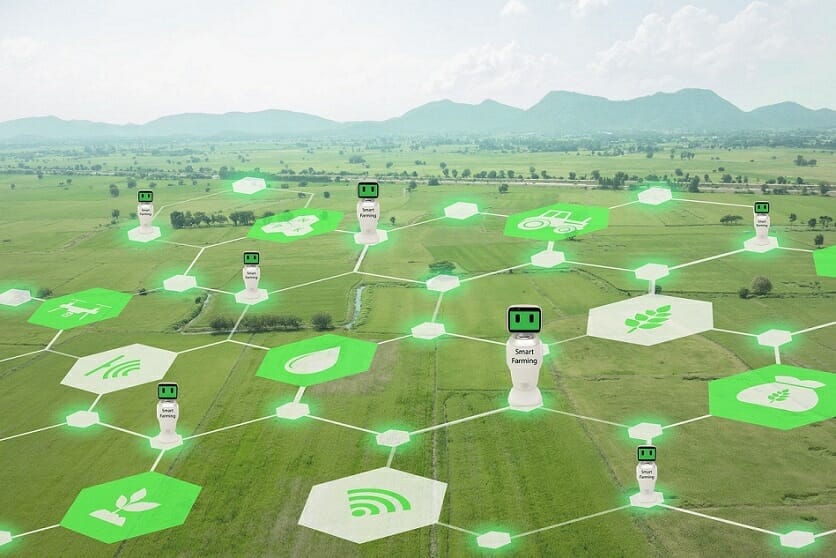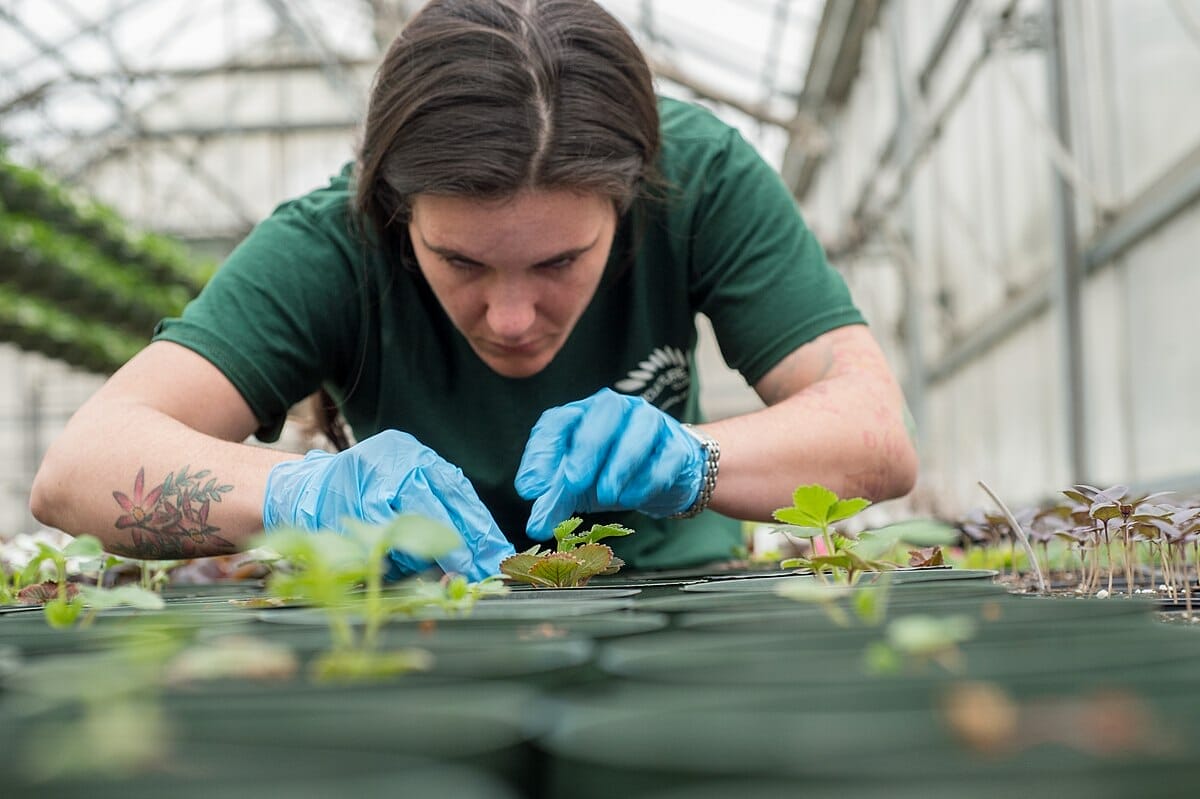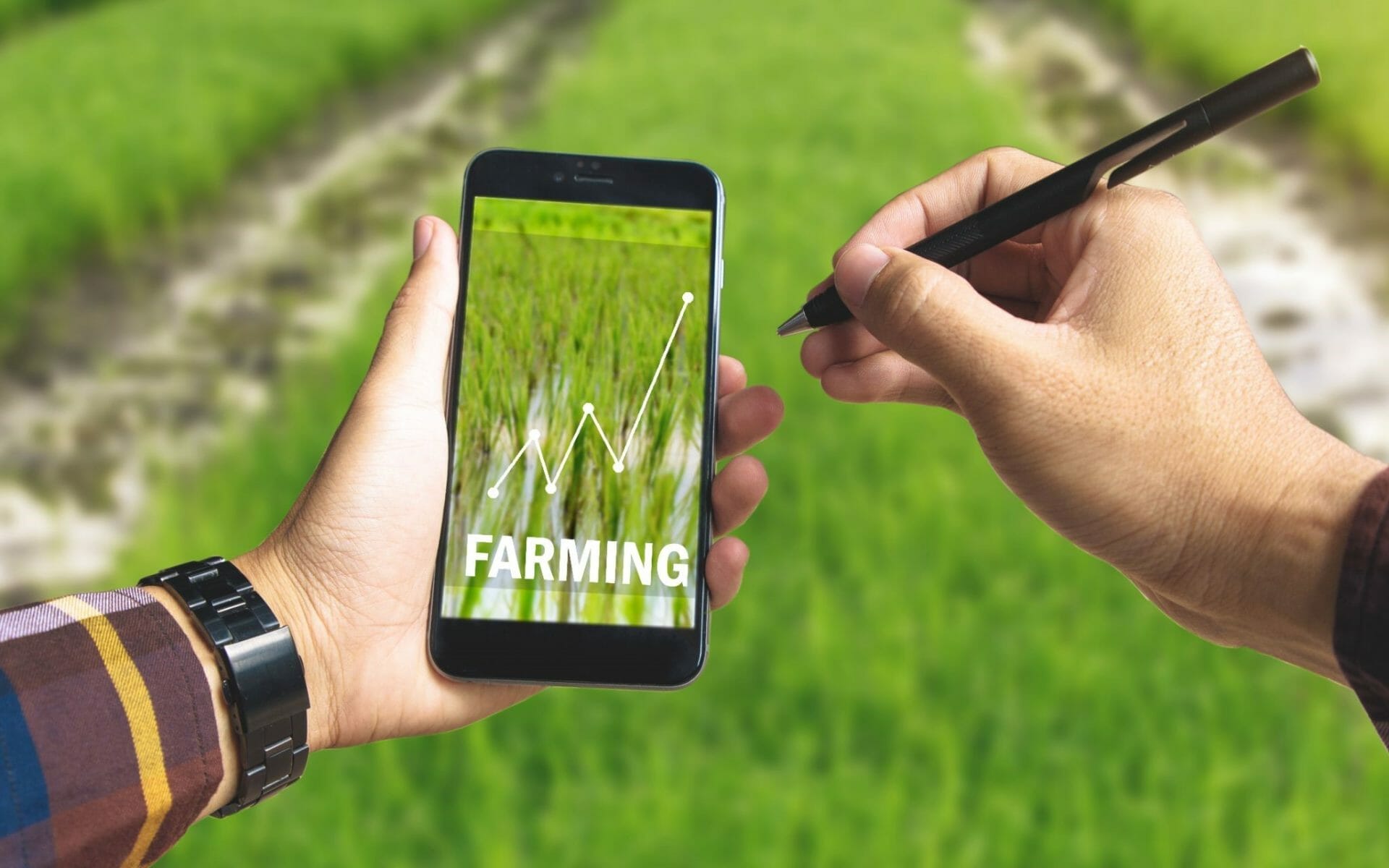Agricultural productivity is vital for food security, economic stability, and sustainable development. Efficient farming practices are needed to meet growing food demand and address climate change and resource scarcity. Tools like precision agriculture, smart irrigation, biotechnology, and farm management software can help you make informed decisions, use resources wisely, and boost yields. Automation and mechanization enhance efficiency and reduce labor costs. Embracing these innovations improves livelihoods, supports local economies, and ensures a sustainable, food-secure future.
This guide examines different tools and techniques that can greatly improve farming, giving farmers practical tips for making their work more efficient.
Mechanization and Automation
Using machines and automation in farming reduces labor costs, increases efficiency, and ensures consistency. Modern equipment and automated systems make farming tasks, like planting and harvesting, quicker and easier. Check out Maupin’s modern equipment and automated systems.
Key Tools and Technologies
- Tractors and Harvesters: Modern tractors and harvesters use GPS for precise planting and harvesting, reducing overlaps and gaps. Yield mapping collects data to help farmers understand productivity.
- Robotics: Autonomous robots handle planting, weeding, and harvesting crops, reducing manual labor and increasing efficiency by working independently with high precision.
- Automated Greenhouses: Automated greenhouses use sensors and software to control climate, irrigation, and nutrient delivery, ensuring optimal growing conditions by adjusting temperature, humidity, and light levels.
Benefits:
- Lower labor costs
- More efficient operations
- Consistent and high-quality results

Precision Agriculture
Precision agriculture (PA) involves using advanced technologies to monitor and manage variations in the field accurately. This approach ensures that the soil and your crops receive what they need for productivity and profitablity.
Key Tools and Technologies
- GPS Technology: GPS technology allows farmers to accurately map their fields and precisely apply fertilizers and pesticides where needed. This improves field management, saves money on inputs, and reduces environmental impact.
- Drones: These are equipped with cameras and sensors, which provide you with real-time information about crop health, soil conditions, and pest issues. They can cover large areas quickly, offering detailed images that help farmers detect problems early and take prompt action.
- Soil Sensors: Soil sensors measure moisture, temperature, and nutrient levels. These help farmers make informed decisions about watering and fertilizing. This technology ensures optimal soil conditions for crop growth, prevents over or under-watering, and ensures plants receive necessary nutrients at the right time.
- Variable Rate Technology (VRT): VRT adjusts the amount of inputs like fertilizers and pesticides based on the specific needs of different areas of the field. This ensures efficient resource use, reduces waste, and enhances productivity and sustainability by providing each part of the field with exactly what it needs.
Benefits:
- Lower costs for fertilizers and pesticides
- Higher crop yields and better quality
- Improved environmental sustainability
Smart Irrigation Systems
Managing water is essential for successful farming, especially in areas with limited water. Smart irrigation systems use technology to make sure crops get the right amount of water at the right time, helping farmers use water efficiently.
Key Tools and Technologies
- Automated Irrigation Systems: These systems use timers and sensors to water crops based on their needs and the weather, preventing over or under-watering and saving water.
- Drip Irrigation: Drip irrigation delivers water straight to plant roots, reducing evaporation and runoff. This ensures efficient water use and helps plants grow better.
- IoT Devices: Internet of Things (IoT) devices monitor soil moisture and weather forecasts to adjust watering schedules automatically. They give farmers real-time data and remote control, helping them use water efficiently.
Benefits:
- Using water efficiently
- Wasting less water
- Better crop health and higher yields
Biotechnology and Genetically Modified Organisms (GMOs)
Biotechnology enhances crop resilience and productivity. Genetically modified organisms (GMOs) withstand pests, diseases, and environmental stresses, ensuring higher yields and reduced losses.
Key Tools and Technologies
- GM Seeds: These seeds are specially made to resist certain pests and diseases, which means farmers need to use fewer chemicals, and the plants grow stronger.
- CRISPR Technology: CRISPR is a tool that can change the genes of plants to give them better qualities, like being able to survive droughts and having more nutrients, making them stronger and healthier.
- Biofertilizers and Biopesticides: These are natural and environmentally friendly products that help make soil richer and protect plants against pests and diseases, leading to healthier and more sustainable farming.
Benefits:
- Higher crop yields and better quality
- Less need for chemical fertilizers and pesticides
- Better for the environment
Farm Management Software
Efficient farm management is essential for getting the best results. Modern software gives farmers the tools to plan, monitor, and analyze their operations, making their farms run more smoothly.
Key Tools and Technologies
- Enterprise Resource Planning (ERP) Systems: Integrate finances and supply chain management into an ERP system. This helps with budgeting, buying supplies, and ensuring smooth farm operations.
- Field Monitoring Systems: These systems help farmers monitor their fields. They track planting and harvesting, check crop growth, and measure water and fertilizer usage. This helps farmers stay organized and adjust for better harvests.
- Data Analytics: These tools analyze data to help farmers see patterns and trends. This information can improve operations, save money, and make smarter planting decisions, leading to better productivity and higher profits.
Benefits:
- Making better decisions
- Working more efficiently
- Managing resources more effectively
Climate-Smart Agriculture
Climate-smart agriculture (CSA) focuses on growing more food sustainably while handling and reducing the effects of climate change. CSA helps farmers manage risks and adapt to changing weather patterns.
Key Tools and Technologies
- Weather Forecasting Tools: These tools provide accurate weather forecasts, helping farmers plan their work and avoid risks. Knowing when to expect rain, frost, or extreme heat helps them make better decisions about planting, watering, and harvesting.
- Climate-Resilient Crops: These crops are developed to survive extreme weather like drought, heat, and flooding. They keep crop production steady and reduce the chance of failure, ensuring a reliable food supply even in tough climates.
- Sustainable Practices: Conservation tillage, crop rotation, and agroforestry improve soil health and biodiversity. Conservation tillage prevents erosion and retains water. Crop rotation preserves soil and reduces pests. Agroforestry adds trees and shrubs, providing fruit and wood.
Benefits:
- Better ability to handle climate change
- Sustainable use of resources
- Increased productivity and food security
Integrated Pest Management (IPM)
IPM uses natural methods, farming practices, physical barriers, and limited chemicals to control pests in an environmentally and economically friendly way. It reduces the need for chemical pesticides, protecting the environment and supporting sustainable farming.
Key Tools and Technologies
- Biological Control Agents: These natural predators and parasites control pest populations. For example, ladybugs eat aphids, and parasitic wasps target caterpillars. This promotes a balanced ecosystem.
- Cultural Practices: These methods manage the environment to reduce pests. Crop rotation changes crops each season to disrupt pests. Intercropping plants and different crops together to confuse pests. Proper sanitation, like removing crop residues and weeds, eliminates pest habitats.
- Physical Controls: These methods use barriers, traps, and mechanical means to remove pests. Barriers like nets prevent pests from reaching crops, traps capture them, and mechanical removal involves picking pests off plants or using machines.
- Chemical Controls: This involves the targeted use of pesticides only when necessary. Farmers monitor pests and apply pesticides based on specific thresholds, reducing environmental impact and preventing resistance.
Benefits:
- Reduced environmental impact
- Lower pesticide costs
- Sustainable pest management
Sustainable Soil Management
Sustainable practices enhance soil fertility, structure, and biodiversity, ensuring long-term productivity.
Key Tools and Technologies
- Cover Crops: Planting clover or rye prevents soil erosion and improves soil structure. These plants protect the soil between main crops, adding organic matter and helping with fertility and water retention.
- Composting: Composting turns organic waste like food scraps and yard waste into nutrient-rich compost, improving soil fertility, structure, and water retention and reducing the need for chemical fertilizers.
- Soil Testing: Regular soil testing checks nutrient levels and pH, helping farmers provide the right amount of nutrients and preventing over-fertilization, leading to healthier plants.
Benefits:
- Improved soil health and fertility
- Enhanced water retention
- Sustainable long-term productivity
Renewable Energy in Agriculture
Incorporating renewable energy sources into farming operations reduces reliance on fossil fuels. It also lowers operational costs and helps protect the environment.
Key Tools and Technologies
- Solar Panels: Provide clean energy for irrigation systems, greenhouse operations, and farm buildings.
- Wind Turbines: Generate electricity for farm use, reducing energy costs.
- Biogas: Converts agricultural waste into biogas, which can be used for heating and electricity generation.
Benefits:
- Reduced energy costs
- Lower carbon footprint
- Sustainable energy solutions
Digital Marketplaces and E-commerce
Access to markets is essential for farmers to sell their produce at fair prices. Digital marketplaces and e-commerce platforms connect farmers with buyers, expanding their reach and improving profitability.
Key Tools and Technologies
- Online Marketplaces: Platforms where farmers can list and sell their products to consumers and businesses directly.
- Mobile Apps: Applications that facilitate the buying and selling of agricultural produce, providing real-time market information.
- Blockchain Technology: This technology ensures transparency and traceability in the supply chain, building trust with consumers.
Benefits:
- Wider market access
- Fair pricing and better profitability
- Enhanced supply chain transparency
Agricultural Education and Training
Continuous education and training are crucial for farmers to stay updated with the best practices. Knowledge transfer through workshops, online courses, and extension services empowers farmers to adopt modern tools effectively.
Key Tools and Technologies
- E-Learning Platforms: Online courses and webinars on various agricultural topics.
- Extension Services: Field agents and experts providing on-site training and support.
- Farmer Cooperatives: Groups that facilitate knowledge sharing and collective learning.
Benefits:
- Improved knowledge and skills
- Enhanced adoption of modern tools
- Better farm management practices
Sustainable Livestock Management
Modern tools and techniques in livestock management improve animal health, productivity, and welfare. Sustainable practices ensure that livestock farming is environmentally friendly and economically viable.
Key Tools and Technologies
- Livestock Monitoring Systems: Wearable devices and sensors that track animal health, behavior, and location.
- Automated Feeding Systems: Ensure precise and timely feeding, improving growth rates and reducing waste.
- Genetic Improvement Programs: Selective breeding techniques to enhance desirable traits in livestock.
Benefits:
- Improved animal health and productivity
- Reduced operational costs
- Sustainable livestock farming
Vertical Farming
Vertical farming is an innovative agricultural practice of growing crops in controlled environments, specifically in vertically stacked layers. This method maximizes space usage and allows for year-round crop production.
Key Tools and Technologies
- Hydroponics: Growing plants in nutrient-rich water solutions without soil, ensuring efficient nutrient uptake and faster growth.
- Aeroponics: Plants are grown in mist environment or air without soil, promoting rapid growth and reducing water usage.
- LED Grow Lights: Energy-efficient lighting that mimics natural sunlight, enabling optimal plant growth indoors.
- Climate Control Systems: Advanced systems that regulate temperature, humidity, and CO2 levels to create ideal growing conditions.
Benefits:
- Efficient use of space
- Year-round crop production
- Reduced water and pesticide usage
Agroecology
Agroecology integrates ecological principles into agricultural practices to promote sustainable and resilient farming systems. It emphasizes soil health, biodiversity, and the use of natural resources.
Key Tools and Technologies
- Polyculture: Growing multiple crop species in the same space, enhancing biodiversity and reducing pest outbreaks.
- Biocontrol Agents: Using natural predators and beneficial microorganisms helps manage pests and diseases, reducing the need for chemical pesticides.
- Organic Farming: Avoiding synthetic fertilizers and pesticides, focusing on natural inputs like compost and green manure.
Benefits:
- Enhanced biodiversity and ecosystem services
- Improved soil health and fertility
- Reduced reliance on chemical inputs
Regenerative Agriculture
It focuses on restoring and enhancing soil health, biodiversity, and ecosystem function. It helps reverse climate change by rebuilding organic matter in the soil, thereby restoring degraded soil biodiversity.
Key Tools and Technologies
- No-Till Farming: Reduces soil disturbance, maintaining soil structure and increasing organic matter content.
- Cover Cropping: Planting cover crops during off-seasons to prevent erosion, improve soil fertility, and suppress weeds.
- Agroforestry:
- Holistic Grazing: Rotational grazing practices that mimic natural grazing patterns, promoting soil health and vegetation recovery.
Benefits:
- Enhanced soil fertility and structure
- Increased biodiversity and ecosystem resilience
- Carbon sequestration and climate change mitigation
Conclusion
The adoption of modern tools and technologies in agriculture is essential for improving productivity, efficiency, and sustainability. Farmers must embrace these innovations to stay competitive and meet food production’s growing demands. By leveraging the power of modern tools, farmers can optimize their operations, reduce costs, enhance productivity, and contribute to a more sustainable and food-secure future.












